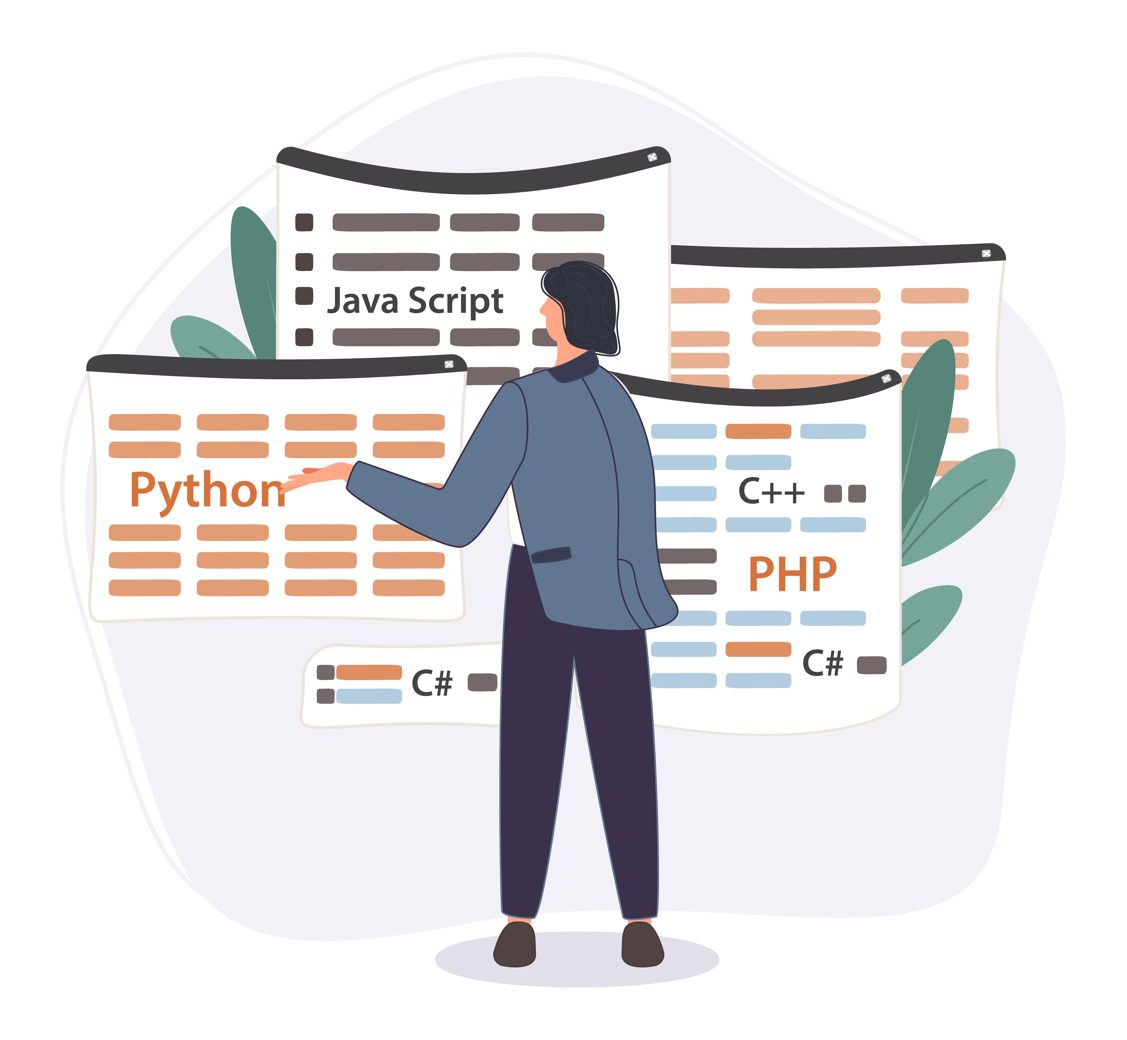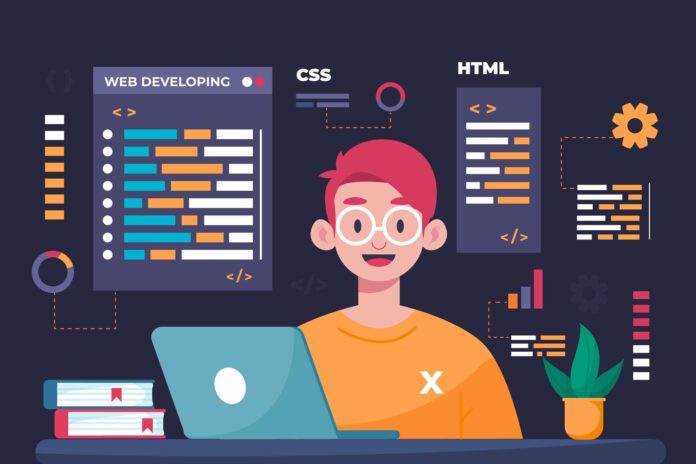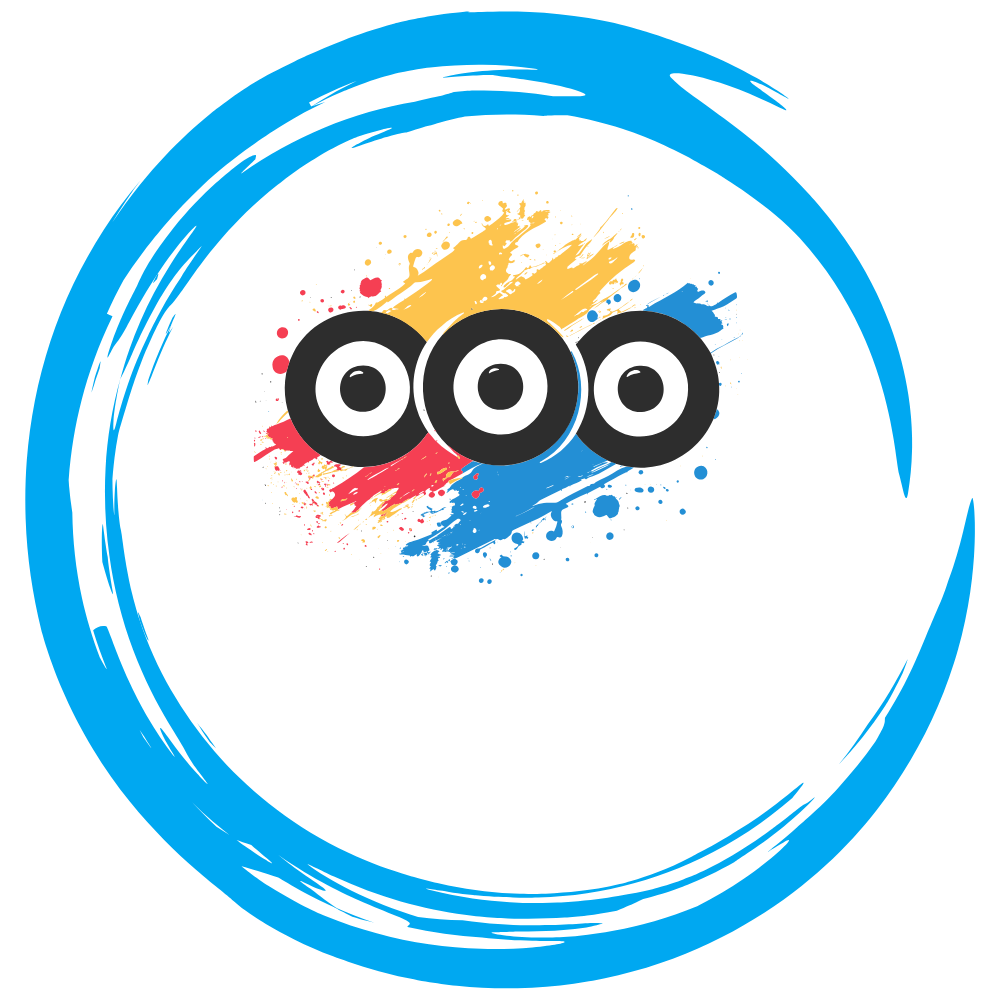As the tech industry continues to evolve at a rapid pace, staying updated with the latest programming languages and technologies is crucial for developers. Whether you are a beginner or an experienced developer looking to expand your skillset, knowing which programming languages are in demand can help you stay ahead in the competitive job market. In this comprehensive guide, we will explore the top programming languages to learn in 2024, their features, use cases, and why they are worth investing your time and effort in.
1. Python
Overview
Python remains one of the most popular programming languages in 2024 due to its simplicity, versatility, and extensive libraries. It is widely used in web development, data science, artificial intelligence, scientific computing, and more.
Key Features:
- Simple and Readable Syntax: Python’s syntax is clear and easy to learn, making it an ideal choice for beginners.
- Extensive Libraries and Frameworks: Libraries like NumPy, Pandas, TensorFlow, and Django enable developers to build a wide range of applications.
- Cross-Platform Compatibility: Python runs on various platforms, including Windows, macOS, and Linux.
Example:
1 2 3 4 | def greet(name): return f"Hello, {name}!" print(greet("World")) |
Advantages of Python
- Ease of Learning: Python’s straightforward syntax and readability make it accessible for beginners.
- Versatility: Python is used in various fields, including web development, data science, AI, and more.
- Strong Community Support: A large and active community means plenty of resources, tutorials, and third-party libraries are available.
- Integration Capabilities: Python integrates well with other languages and tools, making it a versatile choice for diverse projects.
Use Cases
- Web Development: Frameworks like Django and Flask make Python a popular choice for web development.
- Data Science: Libraries like NumPy, Pandas, and Matplotlib are essential tools for data analysis and visualization.
- Artificial Intelligence: TensorFlow, Keras, and PyTorch are widely used for machine learning and deep learning applications.
2. JavaScript
Overview
JavaScript is the backbone of web development, enabling interactive and dynamic web applications. In 2024, JavaScript continues to dominate the front-end development landscape, with frameworks and libraries like React, Vue, and Angular enhancing its capabilities.
Key Features:
- Versatility: JavaScript can be used for both client-side and server-side development.
- Event-Driven Programming: JavaScript is ideal for creating interactive web applications.
- Rich Ecosystem: A plethora of frameworks, libraries, and tools are available to enhance JavaScript development.
Example:
1 2 3 4 5 | function greet(name) { return `Hello, ${name}!`; } console.log(greet("World")); |
Advantages of JavaScript
- Ubiquity: JavaScript is supported by all modern web browsers and is essential for web development.
- Dynamic and Interactive: JavaScript enables the creation of dynamic and interactive user interfaces.
- Extensive Frameworks and Libraries: Frameworks like React, Angular, and Vue.js make development faster and more efficient.
- Active Community: A vast community provides numerous resources, plugins, and support for developers.
Use Cases
- Front-End Development: JavaScript is used to build interactive and responsive web pages.
- Server-Side Development: Node.js allows JavaScript to be used for server-side scripting.
- Mobile App Development: Frameworks like React Native enable the development of mobile applications using JavaScript.

3. Java
Overview
Java is a robust, object-oriented programming language widely used in enterprise applications, Android development, and large-scale systems. Its platform independence and performance make it a reliable choice for many developers.
Key Features:
- Object-Oriented: Encourages modular and reusable code.
- Platform Independence: Java programs can run on any device that has a Java Virtual Machine (JVM).
- Rich API: Provides a vast library of classes and methods to perform various tasks.
Example:
1 2 3 4 5 | public class HelloWorld { public static void main(String[] args) { System.out.println("Hello, World!"); } } |
Advantages of Java
- Stability: Java’s long history and widespread use make it a stable and reliable language.
- Cross-Platform: Write once, run anywhere capability with the JVM.
- Strong Security: Built-in security features for developing secure applications.
- High Performance: Optimized for performance, making it suitable for high-performance applications.
Use Cases
- Enterprise Applications: Used for building large-scale, enterprise-level applications.
- Android Development: The primary language for Android app development.
- Web Applications: Frameworks like Spring and Hibernate are popular for web development.
4. Go (Golang)
Overview
Go, also known as Golang, is a statically typed, compiled language developed by Google. It is designed for simplicity, efficiency, and reliability, making it an excellent choice for system-level programming, cloud services, and backend development.
Key Features:
- Concurrency Support: Built-in support for concurrent programming.
- Fast Compilation: Quickly compiles to machine code, ensuring high performance.
- Garbage Collection: Efficient memory management with garbage collection.
Example:
1 2 3 4 5 6 7 | package main import "fmt" func main() { fmt.Println("Hello, Go!") } |
Advantages of Go
- Simplicity: Go’s syntax is simple and clean, making it easy to learn and write.
- Performance: Compiled to native code, resulting in high performance.
- Concurrency: First-class support for concurrent programming with goroutines.
- Efficiency: Designed to be efficient in terms of both memory and processing power.
Use Cases
- Cloud Services: Widely used in cloud computing and services (e.g., Docker, Kubernetes).
- System Programming: Ideal for system-level programming and server development.
- Backend Development: Suitable for building scalable and high-performance backend systems.
5. Rust
Overview
Rust is a system programming language focused on safety and performance. It ensures memory safety without a garbage collector, making it an excellent choice for performance-critical applications.
Key Features:
- Memory Safety: Eliminates common bugs such as null pointer dereferencing and buffer overflows.
- Concurrency: Ensures thread safety and prevents data races.
- Performance: Comparable to C and C++ in terms of speed and efficiency.
Example:
1 2 3 | fn main() { println!("Hello, Rust!"); } |
Advantages of Rust
- Memory Safety: Ensures memory safety without the need for a garbage collector.
- Concurrency: Robust support for concurrent programming.
- Performance: Offers performance similar to C and C++.
- Growing Ecosystem: Increasingly popular with a growing community and ecosystem.
Use Cases
- System Programming: Suitable for operating systems, device drivers, and other system-level programming.
- WebAssembly: Rust can compile to WebAssembly, making it a good choice for web development.
- Game Development: Used in game engines and high-performance game applications.

6. TypeScript
Overview
TypeScript is a statically typed superset of JavaScript developed by Microsoft. It adds static types to JavaScript, making it easier to catch errors early and improve code quality.
Key Features:
- Static Typing: Adds optional static types to JavaScript.
- Compatibility: Fully compatible with existing JavaScript code.
- Tooling: Enhanced tooling and IDE support for better development experience.
Example:
1 2 3 4 5 | function greet(name: string): string { return `Hello, ${name}!`; } console.log(greet("TypeScript")); |
Advantages of TypeScript
- Type Safety: TypeScript’s static type system helps catch errors during development, leading to more robust code. Types provide a way to describe the shape of an object, thereby ensuring that properties and methods are used correctly.
- Improved Tooling: TypeScript enhances developer productivity with features like auto-completion, refactoring tools, and easy navigation through codebases. These features are especially beneficial for large projects.
- Code Maintainability: The use of types makes it easier to understand the code, navigate through it, and refactor it without introducing bugs. This is particularly useful in large codebases where multiple developers are involved.
- Interoperability: TypeScript is fully compatible with JavaScript, allowing developers to gradually adopt TypeScript in existing JavaScript projects. This makes it easier to transition and leverage the benefits of TypeScript without starting from scratch.
Use Cases
- Large-Scale Applications: TypeScript is ideal for large-scale applications where maintainability and scalability are crucial.
- Front-End Development: Used extensively with frameworks like Angular, which is built with TypeScript, and React, which can be enhanced with TypeScript.
- Back-End Development: TypeScript is also used in back-end development with Node.js, providing type safety and improved code quality.
7. Kotlin
Overview
Kotlin, developed by JetBrains, is a modern, statically typed programming language that runs on the JVM. It is designed to be fully interoperable with Java and is the preferred language for Android app development.
Key Features:
- Interoperability with Java: Kotlin can call Java code and vice versa, making it easy to use Kotlin in existing Java projects.
- Concise Syntax: Reduces boilerplate code, making the codebase more readable and maintainable.
- Null Safety: Kotlin’s type system is designed to eliminate null pointer exceptions.
- Coroutines: Provides support for asynchronous programming, making it easier to write concurrent code.
Example:
1 2 3 | fun main() { println("Hello, Kotlin!") } |
Advantages of Kotlin
- Interoperability: Seamlessly interoperates with Java, allowing the use of existing Java libraries and frameworks.
- Concise and Expressive: Reduces boilerplate code, making the codebase cleaner and more readable.
- Safety: Kotlin’s null safety features help prevent null pointer exceptions, making applications more robust.
- Modern Features: Includes modern programming features like coroutines for handling asynchronous programming efficiently.
Use Cases
- Android Development: Officially supported by Google as the preferred language for Android app development.
- Server-Side Development: Can be used for building server-side applications with frameworks like Ktor and Spring.
- Cross-Platform Development: Kotlin/Native allows developers to compile Kotlin code to run on various platforms, including iOS.
8. Swift
Overview
Swift is a powerful and intuitive programming language developed by Apple for iOS, macOS, watchOS, and tvOS development. Since its release, Swift has gained popularity for its performance, safety, and modern features.
Key Features:
- Safety: Swift’s type system and error handling prevent many common programming errors.
- Performance: Compiles to native code, providing high performance for applications.
- Expressive Syntax: Combines the power and performance of compiled languages with the simplicity and elegance of scripting languages.
- Interoperability: Swift can work alongside Objective-C, making it easy to integrate into existing projects.
Example:
1 2 | let greeting = "Hello, Swift!" print(greeting) |
Advantages of Swift
- Performance: Swift is designed to be fast, with performance close to that of C and C++.
- Safety: Swift eliminates entire classes of unsafe code, providing a safer programming environment.
- Modern Syntax: Swift’s syntax is clean and expressive, making it easier to write and maintain code.
- Interoperability: Fully interoperable with Objective-C, allowing the use of existing code and libraries.
Use Cases
- iOS and macOS Development: The primary language for developing applications for Apple’s ecosystem.
- Cross-Platform Development: Swift can be used with frameworks like SwiftUI for building cross-platform applications.
- Server-Side Development: Swift is also being used for server-side development with frameworks like Vapor.
9. C#
Overview
C#, developed by Microsoft, is a modern, object-oriented programming language that is part of the .NET ecosystem. It is widely used for developing desktop applications, web applications, and games.
Key Features:
- Object-Oriented: Supports encapsulation, inheritance, and polymorphism.
- Rich Library: Access to a comprehensive .NET library that simplifies many programming tasks.
- Language Interoperability: Can interact with other languages in the .NET ecosystem.
- Asynchronous Programming: Built-in support for asynchronous programming with async and await keywords.
Example:
1 2 3 4 5 6 7 | using System; class Program { static void Main() { Console.WriteLine("Hello, C#"); } } |
Advantages of C#
- Versatility: Can be used for a wide range of applications, from desktop to web to mobile development.
- Productivity: Rich set of libraries and frameworks speeds up development.
- Cross-Platform: With .NET Core, C# can be used to build cross-platform applications.
- Community and Support: Strong community and support from Microsoft.
Use Cases
- Web Development: ASP.NET Core is widely used for building robust web applications.
- Game Development: Unity, a popular game engine, uses C# for scripting.
- Desktop Applications: Used for developing Windows desktop applications with WPF and WinForms.

10. PHP
Overview
PHP is a server-side scripting language designed for web development. It is embedded in HTML and widely used for creating dynamic web pages and applications.
Key Features:
- Server-Side Scripting: PHP code is executed on the server, generating HTML which is then sent to the client.
- Database Integration: Seamlessly integrates with various databases, including MySQL, PostgreSQL, and SQLite.
- Wide Hosting Support: Most web hosting providers support PHP, making it easily deployable.
- Extensive Libraries and Frameworks: Rich ecosystem of libraries and frameworks like Laravel and Symfony.
Example:
1 2 3 | <?php echo "Hello, PHP!"; ?> |
Advantages of PHP
- Ease of Use: Simple syntax and embedded in HTML make it easy to learn and use.
- Cost-Effective: Open-source and widely supported, reducing development and deployment costs.
- Flexibility: Highly flexible, suitable for a wide range of web development tasks.
- Large Community: A large and active community provides extensive resources and support.
Use Cases
- Content Management Systems (CMS): Powers popular CMS platforms like WordPress, Joomla, and Drupal.
- E-Commerce Platforms: Used for developing e-commerce sites like Magento and WooCommerce.
- Web Applications: Suitable for developing a wide range of web applications, from simple websites to complex applications.
Conclusion
In 2024, learning a new programming language can open up numerous opportunities and help you stay competitive in the tech industry. Each language discussed in this guide has its unique strengths and use cases. Whether you are interested in web development, data science, mobile app development, or system programming, there is a language tailored to your needs.
By understanding the features, advantages, and use cases of Python, JavaScript, Java, Go, Rust, TypeScript, Kotlin, Swift, C#, and PHP, you can make an informed decision about which language to learn next. Continuous learning and staying updated with the latest trends and technologies will help you advance in your career and tackle exciting new challenges.
Useful Links
- Python Documentation
- Why Learn Python
- JavaScript Documentation
- Why Learn JavaScript
- Java Documentation
- Why Learn Java
- Go Documentation
- Why Learn Go
- Rust Documentation
- Why Learn Rust
- TypeScript Documentation
- Why Learn TypeScript
- Kotlin Documentation
- Why Learn Kotlin
- Swift Documentation
- Why Learn Swift
- C# Documentation
- Why Learn C#
- PHP Documentation
- Why Learn PHP
By exploring these programming languages and understanding their features, advantages, and use cases, you can make an informed decision about which language to learn in 2024. Each language offers unique benefits and opportunities, catering to different interests and career paths in the tech industry. Happy coding!



